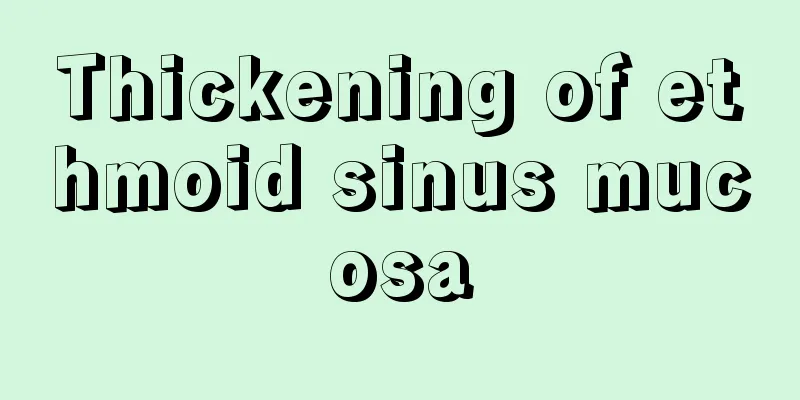What is the plant wolfsbane

|
The plant wolfsbane, as its name suggests, is a rather powerful plant with certain medicinal value. It generally grows on plateaus and is inherently toxic, with its roots, stems, and leaves all containing poison. Wolfsbane itself is cold-resistant and drought-resistant, and has a strong ability to absorb water. General medicines have the effects of removing phlegm, relieving pain, eliminating accumulation and clearing blood. At the same time, wolfsbane can also be made into pesticides to control pests. So what other characteristics does wolfsbane have? Introduction 1. A perennial herb with oblong leaves arranged in whorls, unisexual flowers, and capsule-shaped, oblate fruits. The root is poisonous but can be used in traditional Chinese medicine, having expectorant and analgesic effects. 2. It is a perennial herb with alternate leaves and bisexual flowers. It is very beautiful and can be used for ornamental purposes. The roots can be used to make paper. "Wolfsbane" is the scientific name of this flower, and people in North China commonly call it "Muntou Huanghua". Main Value 【Medicinal materials】 ① Wolfsbane Also known as: Euphorbia paniculata, Mountain Radish (Southern Yunnan Materia Medica), General, Red Wolfsbane, Northwestern Wolfsbane, Headache Flower (called in central Inner Mongolia). It is the dried root of Stellera chamaejasme, which is conical to oblong, slightly twisted, 7 to 30 cm long and 2 to 7 cm in diameter; there are remnants of the aboveground stem at the root head; the surface is brown to tan, with longitudinal wrinkles and transverse elongated lenticels, and sometimes fine roots remain. When the cork peels off, soft fibers are exposed. It is light, tough and not easy to break. The xylem in the center of the cross section is yellow-white, and the phloem in the outer circle is white. Produced in Inner Mongolia, Shanxi, Henan, Qinghai, Gansu, Shaanxi, Sichuan and other places. ② White wolfsbane The dried roots of Euphorbia chamaejasme and Euphorbia lunatum are cut into round pieces. The wolfsbane listed in "Compendium of Materia Medica" is from the Thymelaeaceae family, so it should be regarded as the authentic product. However, the wolfsbane used in most areas is the white wolfsbane of the Euphorbiaceae family. [Chemical composition] The roots of Stellera chamaejasme contain sterols, phenolic components, amino acids, triterpenes and toxic high-molecular organic acids. May also contain anthraquinone glycosides. The roots of Euphorbia chamaejasme contain 10.46% resin and 1-2% hard rubber. [Pharmacological action] A kind of wolfsbane glycoside is extracted from the root of wolfsbane, which is an antibacterial substance formerly known as wolfsbane toxin and is said to have very low toxicity. Oral administration of 6 g (raw drug)/kg of wolfsbane decoction can increase the pain threshold of mice by 20-50% (electric shock mouse tail method and hot plate method). The leaves and roots may contain anthraquinone glycosides, which can enhance small intestinal motility and treat constipation. The roots of Euphorbia chamaejasme can be used to kill maggots and mosquito larvae. The 20% decoction had little effect on the respiration, blood pressure, isolated frog heart and intestine of anesthetized dogs. [Preparation] Raw wolfsbane: Wash with water, moisten thoroughly, slice and dry in the sun. Vinegar wolfsbane: Take wolfsbane slices and add vinegar, mix well, simmer for a while until the vinegar is absorbed, put them in a pot and stir-fry over low heat until slightly dry, take out and dry in the sun. (For every 100 jin of wolfsbane slices, use 20-30 jin of rice vinegar) 【Nature and flavor】Bitter, pungent, neutral, poisonous. ① "Ben Jing": "Tastes spicy, neutral." ② "Bie Lu": "It is very poisonous." ③ "Medicinal Properties": "It tastes bitter and pungent, and is poisonous." ④ "Ben Jing Feng Yuan": "bitter, pungent, cold, highly toxic." [Return to Meridians] "Depei Benshi": "It enters Taiyin meridian and also the Qi of Shaoyin meridian." [Functions and indications] Expel water and eliminate phlegm, break up accumulation and kill parasites. It is used to treat edema, abdominal distension, phlegm, food, and worm accumulation, heart and abdominal pain, chronic bronchitis, cough, asthma, tuberculosis of the lymph nodes, skin, bones, epididymis, scabies, and hemorrhoids and fistulas. ① "Ben Jing": "It is used to treat cough, reverse breathing, breaking up accumulation, diet, cold and heat, water vapor, malignant sores, rat fistula, carbuncle, and poison." ② "Bielu": "Treats the accumulation of ailments under the ribs" ③"Medical Theory": "It can treat phlegm and fluid, and abdominal masses." ④ "Southern Yunnan Materia Medica": "It treats food accumulation in the stomach for a long time, thick phlegm that is sticky like glue. It can attack insect accumulation, promote water flow, relieve gas, eliminate edema, and spit out phlegm." ⑤ "Ben Cao Tong Xuan": "It is used to treat cough and vomiting, carbuncle, scrofula, phlegm, and heart pain." ⑥ "Handbook of Plateau Chinese Herbal Medicine Treatment": "It can reduce qi and kill insects. It can treat phlegm retention, periosteal inflammation, stubborn tuberculosis sores, and alcohol-induced nasal congestion." Tenacious growth Blooming at the border of life and death - Wolfsbane Between the vast desert and grassland, clumps and patches of gray-green grass stand proudly in the dust and gravel. Some of the grass tips have red buds like match heads, and some have already bloomed, a kind of white flower. It's called wolfsbane. The wolfsbane flowers stubbornly sparkled with dazzling luster in the harsh wind and under the afterglow of the setting sun. It is said that it is the last landscape before the grassland turns into a desert. Some say it is more poisonous than a wolf, bringing fear and the threat of death to people. However, people also know that those who come out of the desert see it and see hope, and know that behind it lies life and victory. It is the only one that can survive tenaciously in the harshest environment and miraculously bloom and bear fruit. |
<<: Ten things to note when wearing crystals to achieve superimposed effects
>>: Taboos and precautions for wearing amethyst
Recommend
Can frozen peaches be eaten
Generally speaking, we eat fresh peaches. Of cour...
Brush your teeth immediately after eating? Ten wrong health habits!
Do you raise your chin when you have a nosebleed?...
How to do the five major nursing tasks for primary liver cancer before surgery
Primary liver cancer is a type of cancer. Once yo...
How to make rock sugar pear water for cough
Even for diseases like cough, it is not necessary...
Reasons for low average hemoglobin concentration
Hemoglobin concentration is an item in routine bl...
How to protect oral mucosa, three 'great gods' come to give you tips
To prevent oral diseases, it is very important to...
What are the methods to remove formaldehyde from a new car?
Buying a new car always makes people excited, but...
What are the specific symptoms of brain cancer
Brain cancer is a malignant tumor in the brain. T...
Why do my feet get hot at night?
Hot soles of the feet are a pathological phenomen...
How to prevent lung cancer? The 4 most effective ways to prevent lung cancer
You know, many diseases can be prevented in advan...
Can MRI detect bone cancer
Bone cancer, also known as malignant bone tumor, ...
Why does colon cancer occur? What are the early symptoms of colon cancer?
Cancer is a disease that everyone fears. The harm...
What is the reason for feeling sleepy after eating?
People feel sleepy after eating, especially in sp...
Is it necessary to do cervical cancer screening
Cervical cancer is a malignant tumor caused by pe...
Does brain aneurysm intervention have a high success rate?
Interventional surgery for cerebral aneurysm is a...









